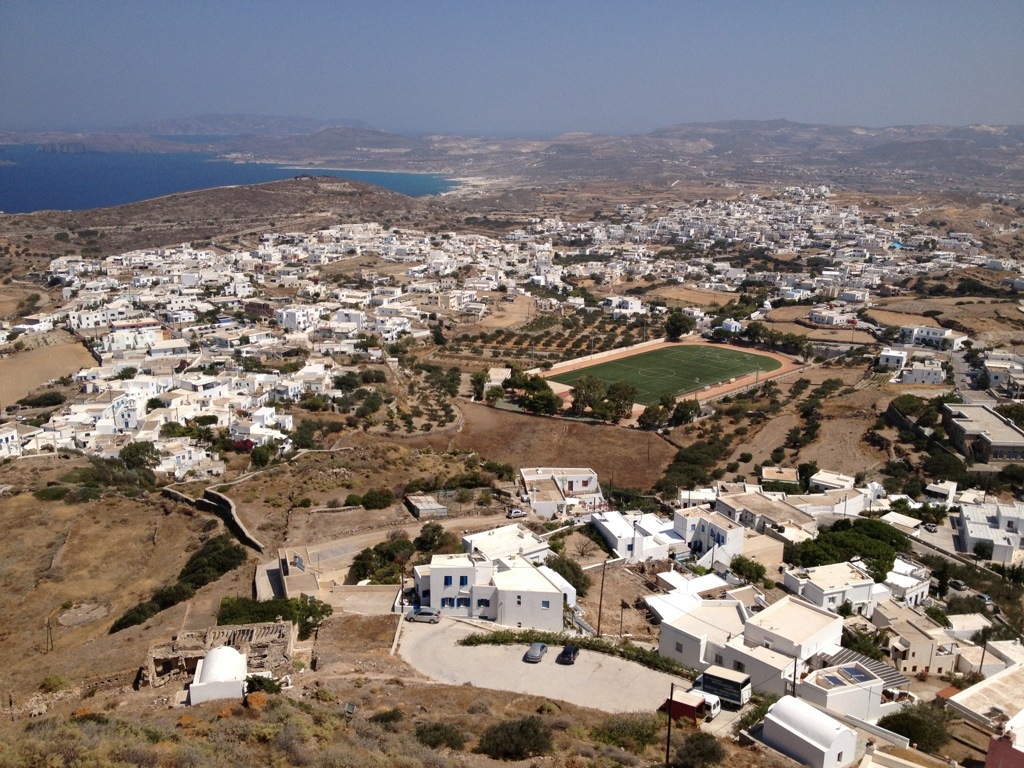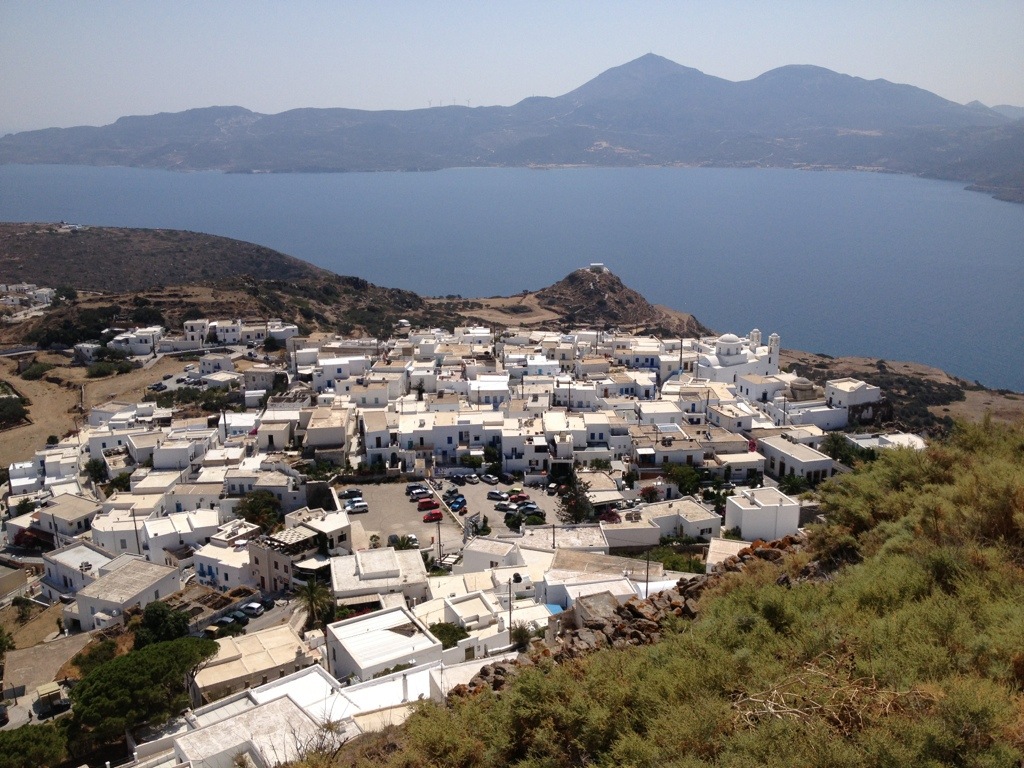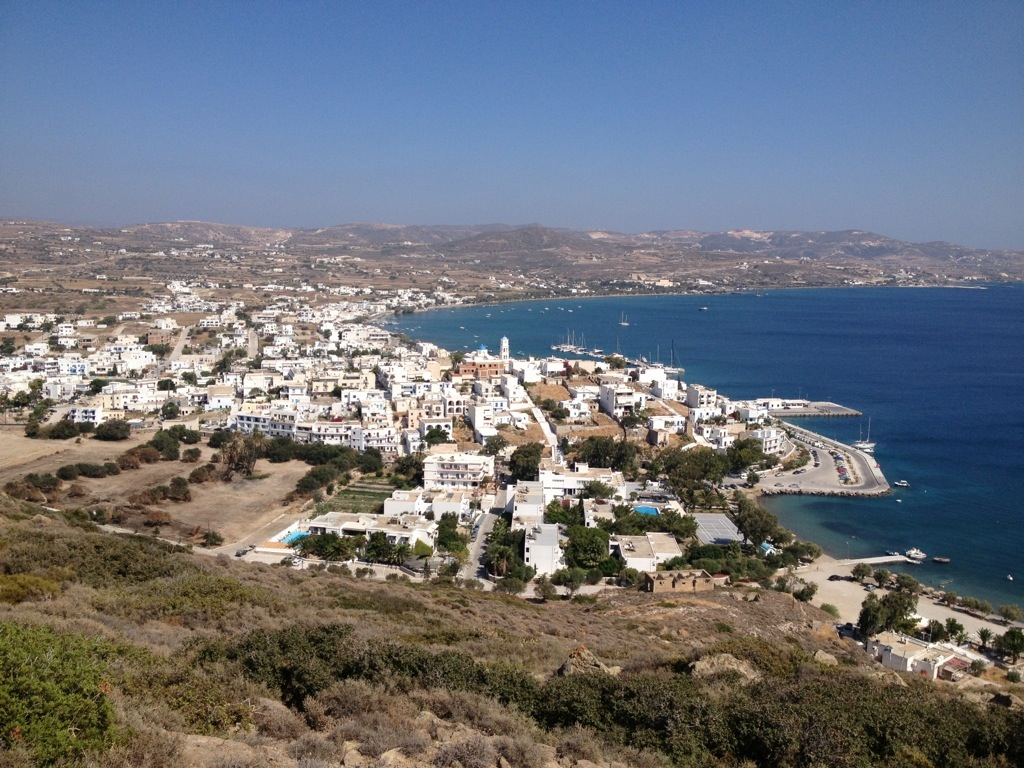Adamantas is its main port and the first view to look upon when approached by ship.
Built on the north side of the bay, Adamantas or ‘’Alamanto” as it used to be called, has been inhabited since 1824. It was built by Cretan refugees expelled from Sfakia, who came to Milos after their failed and bloody revolution against the Turks. Nowadays, the village numbers around 1100 inhabitants.
This seaside island town is composed of small snow-white houses with small yards decorated with flowers and narrow quite lanes which altogether compose a picture of excellent Cycladic beauty. The village of Adamantas throbs with life in summertime. In this village you can combine relaxation and calmness with night life and entertainment, whereas at the same time everything you need for comfortable and pleasant vacations is provided to you: [there are] cafes, restaurants, ouzeries, pizzerias, grill-houses, fast-foods serving souvlaki, a bar, a club, shopping centers, supermarkets, banks, the port authority, the customs, a health center, a pharmacy, a dental clinic, a newsstand for Greek and international press, etc. Here, the island’s night life is intense with bars playing various kinds of music that speed up the rhythms and the entertainment tempo till the very break of dawn.
On the port’s left side you can find the parking lot and then the Lagkada quarter with the Lagkada beach, whereas on the port’s right side the main coastal road stretches out leading to the village’s central square where the bus stop lies, and the taxis await you. On the one side of this coastal road, there is a long tiled pavement, cafeterias, restaurants and tourist shops as well as the municipal Hot Springs of Lakkos, whereas on its left side stand the relatively new port facilities which combined with the safety of the natural port, make Adamantas suitable for yachting activities. (From that point also the trips with boats and touring yachts set out reaching for the inaccessible beaches of the island and also for the tour around Milos and Kimolos).
If you desire to swim, Adamantas can offer that to you, too. Within a short distance and accessible without the use of any means of transportation, lie the beaches of Lagkada (500m from the center of Adamantas) and the beaches of Papikinos (1km away from Adamantas).
Finally, the sights of Adamantas include also : the church of The Assumption of the Virgin, the catholic church of Saint Nikolaos, the Mineral Museum and the Church Museum where the one thousand year old church of The Holy Trinity is housed.
 Triovasalos and Pera Triovasalos
Triovasalos and Pera Triovasalos
